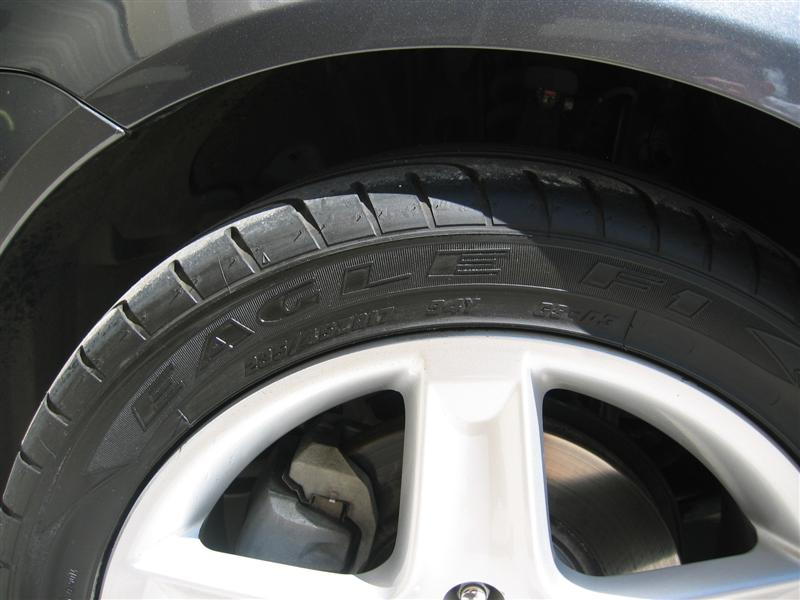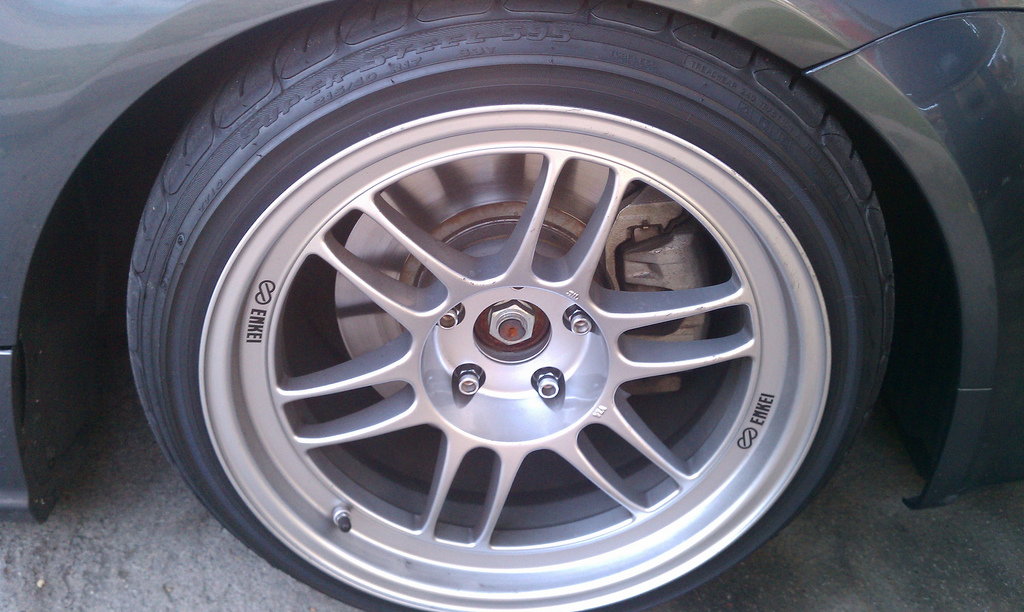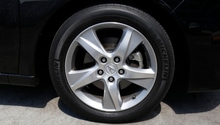Acura TL 2004-2014: Tires General Information and Specs
Learn about the different tires available for your Acura before purchasing your next set.
This article applies to the 3rd and 4th Gen Acura TL (2004-2014).
Tires are an important safety component when considering the safety of you, your passengers and the drivers around you. Like many other components on your vehicle, tires are a wear and tear item and require regular maintenance. Your manufacturer typically details the specific intervals in the driver's manual. As a general rule of thumb, tires should be rotated every 3,000 miles or whenever doing an oil change. This procedure keeps the wear on the tires, both front and back, in an even pattern.
When tires are eventually worn down, they are measured by tread depth. There is an "acceptable" limit that tires can be worn to. Usually it is "3/32" or less than 1/8 of an inch. You will not be able to pass a safety inspection if your tires are worn beyond this point. There are also tests you can perform on your own using a penny or a quarter. Placing the coin in the tire's tread track and ensuring the President's head is "covered" can indicate good tread wear. Some enthusiasts also opt to install larger OEM wheels with smaller diameter or "low profile" tires with a lowered suspension. Regardless, if the time comes for you to replace your tires, it's important you understand what's available and how to choose the right tire for your ride.
Component Breakdown
Tire Size
Knowing which tire size to select is important. Typically, on the sidewall of the tire you will see the tire size inscribed separating three distinct numbers by slashes. For example, 235/45/17 is the recommended tire size for most Acura TL's that have the OEM 17" wheels.

Figure 1. Standard size 235/45/17 tire on OEM Acura TL wheel.
Tire Type
There are several manufacturers who build and sell all types of tires. Typically, the most common tire is the "All-season tire." As the name indicates, this tire can be utilized for practically all types of terrain and seasons. Bear in mind, however; if you live in a climate where winters get rougher than usual, you'll want to consider using winter or "studdable" tires. Those tires are built specifically to provide smooth and safe traction on ice and snow. For the performance-minded enthusiasts, there are also "summer" tires that could be used at the track.

Revs/Mile
This refers to the number of revolutions made by the tire per mile. Most manufacturers list this number when you search for the tires specific to your vehicle. In general, the higher this number, the smaller the "diameter" of the tire. Think of the first number inscribed on the tire before the first slash. It is favorable by enthusiasts to use "smaller" tires when running aftermarket or larger wheels. This is especially desired when the vehicle is lowered for "show and track" purposes. Keep in mind that performance, tread wear, and tire life are significantly reduced. In comparison, a 225/45/17 size tire is smaller in diameter than the standard 235/45/17 tire.

Scheduled Maintenance
Tires should be rotated every 3,000 miles or at every oil change interval. Furthermore, once tire tread reaches the 3/32 mark, they should be replaced. Refer to your owner's manual for specific information.
Common Questions
What size tires should I get for aftermarket wheels?
This requires a bit of research on the user's part. Depending on the size of the wheel, width of the wheel, offsets as well as the suspension being used, the actual tire size can vary. In general, the standard size for OEM wheels recommend a couple of specific size tires. For example, the 17" OEM Acura wheel can be fitted to either a 235/45/17, 245/45/17, or 255/40/17 tire. What's common across these tires is that they are wide enough for the actual rim and provide enough tire for the road, making them safer than any other tire combination available. The standard wheel is roughly 8" wide. Many enthusiasts like the appearance of "wider" wheels with a more narrow tire. To achieve this look, a smaller, more narrow tire is needed especially if the vehicle is lowered. This is to aid in body/fender clearance so that the tire does not rub excessively, causing damage or other hazards.

What brand of tires should I get?
There are many different brands one can select. Researching forums specific to your vehicle make are helpful. Some people will choose one tire over another for various reasons. For example, some may choose the Michelin Pilot Sport A/S because they are all-season tires and have a lower rev/mile rating than comparable Bridgestone Potenza tires. Others may choose a tire with smaller diameter to achieve fitting a wider wheel on a lowered suspension. You can also refer to a tire size calculator to get the exact dimensions needed.
Will other Acura wheels fit my car?
The answer is typically yes, but this is not recommended. Most Acura wheels can be interchanged to fit on the same hubs across many models. A lot of enthusiasts like to do this especially when the vehicle is lowered. The user must consider offsets and width and possibly even tire sizes.
Related Discussions and Sites
- Tire tread depth discussion - Acurazine.com
- Tire rotation frequency - Acurazine.com
- Tire and suspension picture post - Acurazine.com
- Suspension discussion - Acurazine.com
- Wheel/Tire spec discussion - Acurazine.com
- Tire brand discussion - Acurazine.com
- Revs per Mile information - Tirerack.com
- 235/45/17 tire reference - Tiresize.com
- Tire Size Calculator - 1010tires.com
- NHTSA Acura TL references - NHTSA.gov






